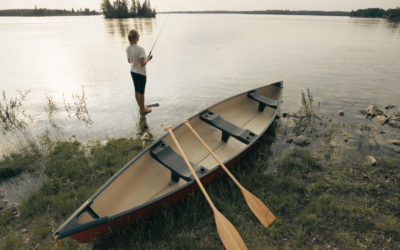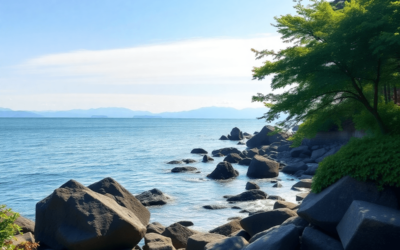Saskatchewan is a province located in western Canada, known for its vast prairies, scenic landscapes, and friendly people. It is the sixth largest province in Canada and is home to over 1.1 million people. Saskatchewan is a province with a rich history, diverse culture, and a strong economy.
Geography and Climate: Saskatchewan is a landlocked province bordered by Manitoba to the east, Alberta to the west, the Northwest Territories to the north, and the United States to the south. The province has a diverse landscape that includes the boreal forest, rolling hills, and vast stretches of prairie. Saskatchewan has a continental climate with warm summers and cold winters. The province is known for its clear blue skies and stunning sunsets.
Economy and Population: Saskatchewan’s economy is driven by agriculture, mining, and oil and gas. The province is the largest producer of potash in the world and is also a major producer of uranium, oil, and natural gas. Saskatchewan’s population is diverse and includes people of Indigenous, European, and Asian descent. The province is known for its friendly people, strong sense of community, and welcoming atmosphere.

Key Takeaways
- Saskatchewan is a province in western Canada known for its diverse landscape, friendly people, and strong economy.
- The province has a continental climate with warm summers and cold winters, and is known for its clear blue skies and stunning sunsets.
- Saskatchewan’s economy is driven by agriculture, mining, and oil and gas, and the province is home to a diverse population of over 1.1 million people.
Saskatchewan Overview
Saskatchewan is a Canadian province located in the western part of the country. It is the sixth-largest province in terms of area and has a population of over one million people. The capital city of Saskatchewan is Regina, which is also the second-largest city in the province.

The province of Saskatchewan is known for its vast prairies, beautiful lakes, and scenic landscapes. It is also home to several national and provincial parks, including Prince Albert National Park, Grasslands National Park, and Cypress Hills Interprovincial Park.

Saskatchewan is a major producer of agricultural products, particularly wheat, canola, and other grains. The province is also home to a thriving mining industry, with significant deposits of potash, uranium, and other minerals.
The government of Saskatchewan is a parliamentary democracy, with the premier serving as the head of government. The province is also represented in the federal government of Canada by 14 Members of Parliament and six Senators.
Overall, Saskatchewan is a vibrant and diverse Canadian province that offers a unique blend of natural beauty, cultural heritage, and economic opportunity. Whether you are a resident or a visitor, there is always something new and exciting to discover in this dynamic Canadian province.
Geography and Climate
Saskatchewan is a prairie province located in the heart of North America. It is the only province in Canada that is entirely landlocked. Saskatchewan is bordered by the provinces of Alberta to the west, Manitoba to the east, and the Northwest Territories to the north. The United States borders Saskatchewan to the south.
#1 Size and Boundaries
Saskatchewan is the seventh-largest province in Canada, covering an area of 651,900 square kilometers. The province is almost rectangular in shape, with a length of about 660 kilometers from north to south and a width of about 550 kilometers from east to west. The province’s borders are not based on natural features like lakes, rivers, or drainage divides, making it unique among the provinces and territories of Canada.
#2 Major Cities and Lakes
Saskatchewan has several major cities, including Saskatoon, the largest city in the province, and Prince Albert, the third-largest city. Other major cities in the province include Moose Jaw and Lloydminster. Saskatchewan is also home to many lakes, including Lake Athabasca, Reindeer Lake, and the Athabasca Sand Dunes.
#3 Interprovincial Parks
Saskatchewan is home to several interprovincial parks, including Cypress Hills Interprovincial Park, which is shared with Alberta, and Turtle Mountain Provincial Park, which is shared with Manitoba. The Athabasca Sand Dunes Provincial Park is also located in Saskatchewan and is home to the largest active sand surface in North America.
#4 Climate
Saskatchewan has a continental climate, with warm summers and cold winters. The province is known for its long hours of sunlight during the summer months, with some areas receiving up to 16 hours of daylight per day. Saskatchewan experiences a range of weather conditions, including thunderstorms, tornadoes, blizzards, and extreme cold temperatures during the winter months.

Overall, Saskatchewan’s unique geography and climate make it a fascinating province to explore and experience.
Economy and Population
#5 Economy Overview
Saskatchewan has a diverse economy that is heavily reliant on agriculture, mining, and energy sectors. It is the largest exporter of wheat and potash in Canada. The province’s GDP is approximately $87 billion, and the population is over 1.2 million people [1].
The government of Saskatchewan has been actively promoting investment in the province, and the province has experienced remarkable growth in investment in the past decade, with an estimated $154 billion in new capital investment between 2013 and 2022 [5]. Saskatchewan is also ranked as the top jurisdiction in Canada for mining investment [5].
#6 Population Demographics
The population of Saskatchewan is diverse, with a mix of indigenous groups and immigrants. The majority of the population speaks English, with French being the second most common language. According to recent statistics, the population of Saskatchewan is 1,251,651 [1].
#7 Major Industries
Agriculture is the largest industry in Saskatchewan, with over 50% of the province’s land used for farming. The province is also a major producer of oil, natural gas, and potash. The service sector is also a significant contributor to the economy, with industries such as finance, insurance, and real estate growing in recent years [2].

In addition to agriculture and energy, Saskatchewan also has a growing science and technology sector. The province is home to several research centers and institutions, including the University of Saskatchewan and the Canadian Light Source Synchrotron. These institutions focus on areas such as biotechnology, mining, and environmental science [2].
Overall, Saskatchewan’s economy is diverse and growing, with a mix of traditional industries and emerging sectors. The province’s population is also diverse, with a mix of indigenous groups and immigrants contributing to the province’s growth and development.
3. Natural Resources and Environment
#8 Mineral Resources
Saskatchewan is known for its abundant mineral resources, including potash, sylvite, uranium, coal, and petroleum. Potash is Saskatchewan’s official mineral, and the province is the world’s largest producer and exporter of potash. Over 95 percent of the potash produced in Saskatchewan is used for fertilizer purposes. The province is also the second-largest oil-producing province in Canada. The mining and extraction of these minerals have contributed significantly to the economy of Saskatchewan.
#9 Reindeer Lake – Fishing Hotspot
Reindeer Lake, located in northeastern Saskatchewan, is one of the largest lakes in the province. It covers an area of over 6,000 square kilometers and is a popular fishing destination. The lake is home to numerous fish species, including walleye, northern pike, lake trout, and Arctic grayling. The walleye population in Reindeer Lake is particularly abundant, making it a hotspot for anglers. The lake is also an important habitat for various protected species, including the woodland caribou and the peregrine falcon.
#10 Boreal Forests and Grasslands National Park
Saskatchewan is home to vast expanses of boreal forests, which cover over half of the province. The boreal forest is a unique ecosystem that is characterized by its dense forests, semi-wooded areas, and wetlands. It is home to a diverse range of plant and animal species, including black bears, moose, and wolves. The province also has a national park, the Grasslands National Park, which preserves the prairies and grasslands of southwestern Saskatchewan. The park is home to various species of wildlife, including bison, pronghorns, and coyotes.

In summary, Saskatchewan’s natural resources and environment are diverse and abundant. The province’s mineral resources have contributed significantly to its economy, while its lakes and forests provide important habitats for various plant and animal species. Reindeer Lake is a popular fishing destination, while the boreal forests and the Grasslands National Park offer unique opportunities for outdoor recreation and wildlife viewing.
#11 Culture, History, Politics
Saskatchewan has a rich cultural and historical background that is reflected in its politics and traditions. The province’s flag features a stylized lion and the colors red, green, and gold, representing the province’s natural beauty and agricultural heritage.

The Cree Nation has a strong presence in Saskatchewan, and their culture and traditions are an important part of the province’s history. The Western Red Lily, the provincial flower, is also a symbol of the Cree Nation, and is often used in their traditional medicine.
Saskatchewan’s official sport is curling, which is a popular pastime in the province. The sport is so popular that it is often referred to as the “Roaring Game”. The province is also known for its love of hockey, and is home to many talented players, including Gordie Howe.
The province’s coat of arms features the shield of arms, which includes a brown shield with a white-tailed deer and a sharp-tailed grouse. The shield is surrounded by a green and gold wreath of wheat and a white birch emblem. The emblem is topped by a helmet with a crown and a beaver as a crest, representing the province’s connection to the British monarchy.
Saskatchewan is often referred to as the “Land of Living Skies” because of its breathtaking sunsets, sunrises, and starry skies. The province is also home to many rivers, including the Saskatchewan River and the South Saskatchewan River, which are important for transportation and agriculture.

Politics in Saskatchewan have been dominated by the New Democratic Party and the Saskatchewan Party. The province has produced many notable politicians, including John Diefenbaker, who served as the 13th Prime Minister of Canada, and Tommy Douglas, who introduced universal healthcare to Canada.
Saskatchewan is a prairie province with a rich cultural heritage and a strong connection to its natural beauty. Its people are proud of their history and traditions, and are committed to preserving them for future generations.
Summary
Saskatchewan is a province located in western Canada. It is known for its vast open spaces, prairies, and vibrant cultural heritage. Here are ten interesting facts about Saskatchewan:
- Saskatchewan is home to the RCMP (Royal Canadian Mounted Police) Academy, where all Mounties receive their training.
- The province produces more than half of the wheat grown in Canada, making it an important contributor to the country’s agricultural industry.
- Saskatchewan is the birthplace of Canadian medicare, a publicly-funded health care system that provides universal coverage to all Canadian citizens.
- The western red lily is the official provincial flower of Saskatchewan. This beautiful flower grows in moist meadows and semi-wooded areas and is a protected species.
- Saskatchewan is home to the Great Sandhills, a unique area of sand dunes that covers more than 1,900 square kilometers.
- The sharp-tailed grouse, a popular game bird, is the official provincial bird emblem of Saskatchewan.
- Saskatchewan is the only province in Canada with entirely man-made borders, following the lines of longitude and latitude.
- The province has a rich Indigenous history, with First Nations and Métis people making up a significant portion of the population.
- Saskatchewan is known for its harsh winters, with temperatures often dropping well below freezing. However, it also experiences hot summers, with temperatures reaching into the high 30s Celsius.
- The province is home to many beautiful lakes, including Lake Diefenbaker, which is one of the largest bodies of water in southern Saskatchewan.
Overall, Saskatchewan is a fascinating province with a rich cultural heritage and unique natural features. Whether you’re interested in history, agriculture, or outdoor adventure, there’s something for everyone in Saskatchewan.
If you want to learn more about Canada or Western Canada then visit the “About Canada” section on my blog.




